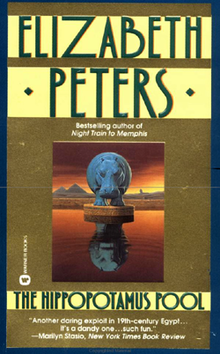(148209) 2000 CR105
(148209) 2000 CR105| 디스커버리[1] | |
|---|---|
| 검색 대상 | 마크 W. 부이에 |
| 발견일자 | 2000년 2월 6일 |
| 지정 | |
| 2000 CR105 | |
| 궤도 특성[2][4] | |
| 2016년 1월 13일 (JD 2457400.5) | |
| 불확실성 매개변수 2 | |
| 관측호 | 5547일(15.19년) |
| 가장 빠른 사전 검색 날짜 | 2000년 2월 6일 |
| 압헬리온 | 411.62 AU(61.577 Tm) (Q) |
| 페리헬리온 | 44.286 AU(6.6251Tm) (q) |
| 227.95 AU(34.101 Tm) (a) | |
| 편심성 | 0.80572 (e) |
평균 궤도 속도 | 1.63km/s |
| 5.28267°(M) | |
| 0° 0 1m.031s/일(n) | |
| 기울기 | 22.71773° (i) |
| 128.24627° (Ω) | |
| 317.219° (ω) | |
| 물리적 특성 | |
| 치수 | |
| 0.04(예상)[5] | |
| 온도 | ~ 19K |
| 23.8[8] | |
| 6.3[4] | |
(148209) 2000 CR은105 2015년[update] 현재 태양계에서 10번째로 가장 먼 것으로 알려진 넵투니아 횡단 물체다. 분리된 물체로 간주되며,[9][10] 3305년마다 222 천문단위(AU)의 평균 거리에서 매우 편심된 궤도를 통해 태양을 공전한다.[4]
설명
Mike Brown의 웹사이트는 이 행성을 0.04로 추정된 알베도 기준으로 328km(204 mi)의 지름을 가진 왜성일 가능성이 있는 행성으로 나열하고 있다.[5] 알베도는 물체가 파란색(중립)을 가지고 있기 때문에 낮을 것으로 예상된다.[5] 그러나 알베도가 더 높으면 그 물체는 쉽게 그 크기의 절반일 수 있다.
(148209) 2000 CR과105 Sedna는 근막거리에서도 해왕성의 중력 영향 내에 있지 않다는 점에서 산란-디스크 물체와 다르다. 이 물체들이 어떻게 현재의, 멀리 떨어진 궤도에 있게 되었는가는 미스테리한 것이다. 다음과 같은 몇 가지 가설들이 제시되었다.
- 그들은 지나가는 별에 의해 원래 위치에서 뽑혔다.[11][12]
- 그들은 매우 멀리 떨어져 있고, 아직 발견되지 않은 거대한 행성에 의해 원래의 위치에서 끌어내려졌다.[13]
- 이들은 네메시스 등 태양 주위를 돌고 있는 발견되지 않은 동반성(同性)에 의해 원래 위치에서 끌어낸 것이다.[13]
- 그들은 태양 역사 초기에 가까운 만남에서 또 다른 행성계로부터 포착되었다.[11] 케니언과 브롬리에 따르면 태양과 같은 별이 조기에 근접했을 확률은 15%이며, 외부 행성 교환이 일어났을 확률은 1%이다.(148209) 2000105 CR은 세드나보다 포획된 행성 물체일 확률이 2~3배 높은 것으로 추정된다.[11]
(148209) 2000 CR은105 태양계에서 최초로 발견된 물체로서 150AU를 초과하는 반주축과 해왕성 너머의 근위축, 340°±55°의 근위설을 가지고 있다.[14] 그것은 100AU보다 큰 반주축과 42AU를 넘는 것으로 알려진 11개의 물체 중 하나이다.[15] 그것은 플래닛 나인의 영향을 받을지도 모른다.[16]
참고 항목
참조
- ^ "List of numbered minor planets". Center for Astronomy. Harvard University.
- ^ a b Marc W. Buie (21 December 2006). "Orbit Fit and Astrometric record for 148209". SwRI (Space Science Department). Retrieved 18 July 2008.
- ^ "Barycentric Osculating Orbital Elements for 2000 CR105". Retrieved 25 January 2016. (Ephemeris 유형:요소 및 중심:@0)
- ^ a b c "JPL Small-Body Database Browser: 148209 (2000 CR105)". Retrieved 11 April 2016.
- ^ a b c d e Brown, Michael E. "How many dwarf planets are there in the outer solar system? (updates daily)". California Institute of Technology. Archived from the original on 18 October 2011. Retrieved 16 February 2014.
- ^ "List of known trans-Neptunian objects". Johnston's Archive. Retrieved 5 April 2014.
- ^ a b Hainaut, O.R.; Boehnhardt, H.; Protopapa, S. (October 2012). "Colours of minor bodies in the outer solar system. II. A statistical analysis revisited". Astronomy and Astrophysics. 546: 20. arXiv:1209.1896. Bibcode:2012A&A...546A.115H. doi:10.1051/0004-6361/201219566. S2CID 54776793. Retrieved 26 September 2019.
- ^ "AstDys (148209) 2000CR105 Ephemerides". Department of Mathematics, University of Pisa, Italy. Archived from the original on 26 May 2011. Retrieved 16 March 2009.
- ^ Jewitt, David; Morbidelli, Alessandro; Rauer, Heike (2007). Trans-Neptunian Objects and Comets. Swiss Society for Astrophysics and Astronomy. Saas-Fee Advanced Course. 35. Berlin: Springer. p. 86. ISBN 978-3-540-71957-1.
- ^ Lykawka, Patryk Sofia; Mukai, Tadashi (July 2007). "Dynamical classification of trans-Neptunian objects: Probing their origin, evolution, and interrelation". Icarus. 189 (1): 213–232. Bibcode:2007Icar..189..213L. doi:10.1016/j.icarus.2007.01.001.
- ^ a b c Kenyon, Scott J.; Bromley, Benjamin C. (2004). "Stellar encounters as the origin of distant Solar System objects in highly eccentric orbits". Nature. 432 (7017): 598–602. arXiv:astro-ph/0412030. Bibcode:2004Natur.432..598K. doi:10.1038/nature03136. PMID 15577903. S2CID 4427211.
- ^ Morbidelli, Alessandro; Levison, Harold F. (2004). "Scenarios for the Origin of the Orbits of the Trans-Neptunian Objects 2000 CR105 and 2003 VB12 (Sedna)". The Astronomical Journal. 128 (5): 2564–2576. arXiv:astro-ph/0403358. Bibcode:2004AJ....128.2564M. doi:10.1086/424617. S2CID 119486916.
- ^ a b Matese, John J.; Whitmire, Daniel P.; Lissauer, Jack J. (2005). "A wide-binary solar companion as a possible origin of Sedna-like objects". Earth, Moon, and Planets. 97: 459.
- ^ "JPL small-body database search engine: a > 150 (AU) and q > 30 (AU)". JPL Solar System Dynamics. Retrieved 9 April 2014.
- ^ "MPC list of a > 100 and q > 42". IAU Minor Planet Center. Retrieved 24 July 2017.
- ^ Brown, Mike (12 February 2016). "Why I believe in Planet Nine". FindPlanetNine.com.
외부 링크
- 2000 CR의105 궤도 결정
- 태양계를 탈출하는 우주선(천체 위)
- 세계 도서: 명왕성 너머의 세계
- (148209) 2000 CR105(AstDyS-2, 소행성—동적 사이트)
- (148209) JPL 소형 본체 데이터베이스의
 2000 CR105
2000 CR105



